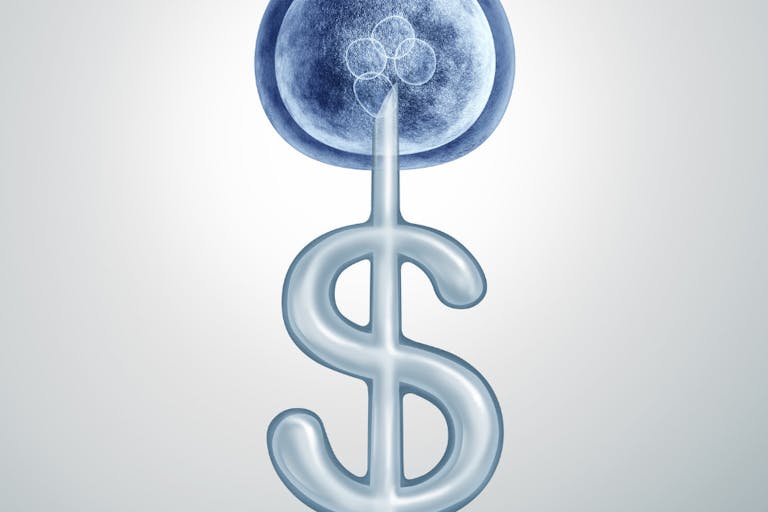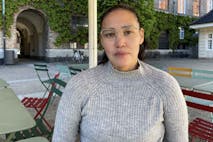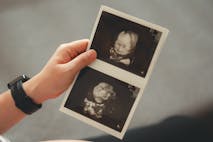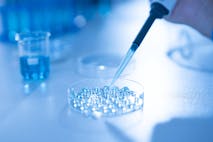
The federal abortion battle testing the pro-life movement
Mark Wiltz
·
Finland’s falling birth rate leads to endorsement of exploitative practices
As Finland continues to grapple with a plummeting birth rate, government officials attempt new ways to increase the number of babies being born — including offering women more money to donate their eggs.
Finland’s government plans to increase the amount compensated for donor eggs, from 250 euros to 350 euros.
More people are seeking donor eggs and sperm than are donating, and some are calling for the Finnish government to push for more donations.
Experts who study egg donation note that women are not properly informed of risks, with the fertility industry often putting profit over women’s safety — hormonally overstimulating women to harvest as many eggs as possible.
Donor cells are frequently used for IVF, a process fraught with ethical issues in which embryos are created, graded, and destroyed as part of the typical process.
The Finnish Broadcasting Company reported that the new government budget will increase compensation for donor eggs, from 250 euros to 350 euros. Additionally, more support services will be available for women who experience miscarriage, or have a fear of childbirth — a condition known as tokophobia.
Simpukka, a peer support organization for people experiencing infertility, issued a press release applauding the move, though they still said it isn’t enough.
“Finland’s birth rate is the lowest in recorded history, but at the same time, the queues for donor cell treatments are unreasonably long. Many people in the queue reach the age of 40 and are denied treatment. The shortage of donated gametes in particular delays access to treatment. This is unsustainable for both the individual and society. Resources must be increased immediately,” Piia Savio, Simpukka’s executive director, said.
Jenni Huhtala, another specialist with Simpukka, said there are more people seeking donor sperm and eggs than people donating them. Due to the donor shortage, it is of paramount importance that the government now takes concrete steps to support the implementation of donor cell treatments. This will enable the realization of the wish for children for those who would otherwise not be able to have children,” she said.

Similar efforts have been launched in other countries, like Scotland, yet the high risks of egg donation are often downplayed in the plea for more donations.
“In our first published study of 155 egg donors, we found that 30.3% reported Ovarian Hyper Stimulation Syndrome (OHSS),” Wendi Kramer, Donor Sibling Registry director and co-founder, said. “In our second survey of 176 egg donors in 2014, we found that 32.4% of egg donors reported complications such as OHSS and infection. In our third Study of 363 egg donors in 2021, 22.4% reported experiencing OHSS.”
Medical anthropologist Diane Tober, who created a study to examine the effects of egg donation, likewise emphasizes its risks:
Article continues below
Dear Reader,
Have you ever wanted to share the miracle of human development with little ones? Live Action is proud to present the "Baby Olivia" board book, which presents the content of Live Action's "Baby Olivia" fetal development video in a fun, new format. It's perfect for helping little minds understand the complex and beautiful process of human development in the womb.
Receive our brand new Baby Olivia board book when you give a one-time gift of $30 or more (or begin a new monthly gift of $15 or more), and your gift will be DOUBLED to fuel Live Action’s life-saving content.
Some clinics and agencies encourage donors to continue to donate well beyond the ASRM recommend cycle limit of six in a lifetime. One donor in my study donated 19 times! If we had a system to track donor cycles these kinds of things wouldn’t happen.
I’ve also seen donors hormonally stimulated to produce massive quantities of eggs in a single cycle. The target range is supposed to be about 15 to 20, rather than the normal one per menstrual/ovulation cycle, but some physicians aim to get as many eggs as they can out of a single donor cycle. Some donors in my study have produced as high as 80 eggs in a single cycle!
This kind of practice increases risks for the donor […but] the more eggs a donor produces the higher the profit potential to the clinic.
Promoting this also promotes the commodification and dehumanization of children, treating them as products rather than people.
One of the issues, as described in a Live Action video by Dr. Lauren Rubal, a board-certified OB/GYN and integrative medicine physician with a subspecialty in reproductive endocrinology and infertility, is the number of children who have to die in order to create one baby that will survive.
“An embryo is a human being at the earliest stages of his or her development, formed through a process called fertilization, when sperm and egg meet. He or she is a unique, substantially whole, new human being. Sex, blood type, hair color, eye color, are just a few of the traits immediately determined at fertilization. This new human being is one-of-a-kind, never-before-existing and never-to-exist-again. At this point in the process, these embryos have one of three fates. They’ll be transferred back to a woman’s uterus, they’ll be flash-frozen and stored, or they’ll be destroyed,” she explained.
“This is the fundamental ethical issue with IVF, the destruction or abandonment of human life. A recent study showed that the number of embryos needed to optimize cumulative live birth rates was nine. This means that up to eight embryos may not survive, or will be frozen or destroyed. So effectively, you’re choosing the death of nine to get the life of one. Even though you have good intentions, you just want life. You’re also choosing all of the consequences that follow.”
Just because people want a child doesn’t mean they are owed a child. The risk to women who donate eggs for other people’s gain is rarely mentioned. Little regulation leads to greater abuses, and greater violations of the human rights of children created through gamete donation and IVF.
Live Action News is pro-life news and commentary from a pro-life perspective.
Contact editor@liveaction.org for questions, corrections, or if you are seeking permission to reprint any Live Action News content.
Guest Articles: To submit a guest article to Live Action News, email editor@liveaction.org with an attached Word document of 800-1000 words. Please also attach any photos relevant to your submission if applicable. If your submission is accepted for publication, you will be notified within three weeks. Guest articles are not compensated (see our Open License Agreement). Thank you for your interest in Live Action News!

Mark Wiltz
·
Investigative
Carole Novielli
·
International
Cassy Cooke
·
Analysis
Nancy Flanders
·
Analysis
Cassy Cooke
·
Issues
Sheena Rodriguez
·
Issues
Cassy Cooke
·
Politics
Cassy Cooke
·
International
Cassy Cooke
·
International
Cassy Cooke
·
Analysis
Cassy Cooke
·